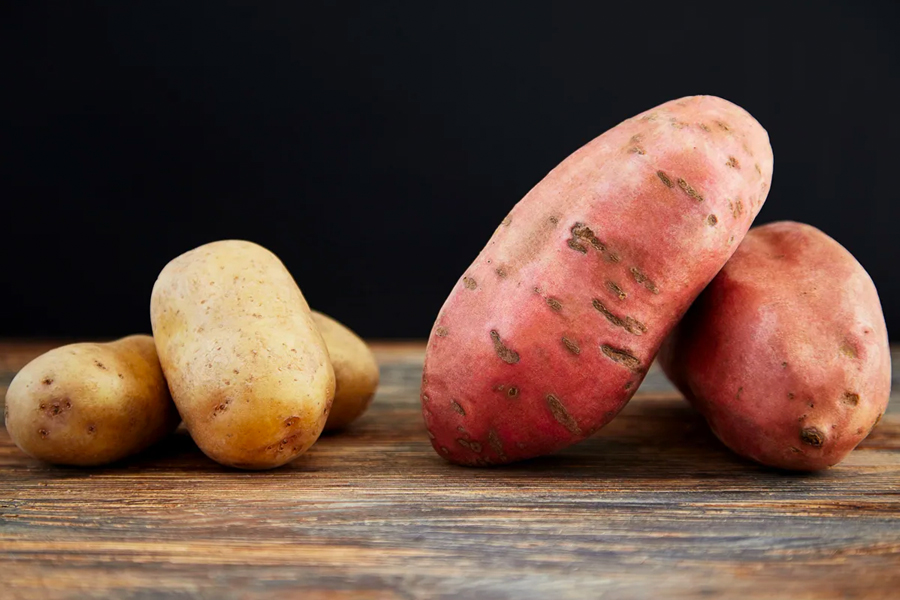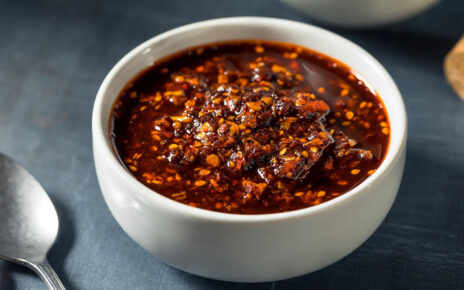Potatoes and Sweet potatoes are tuberous root vegetables but not exactly close family. Both are different in taste and appearance. At the dinner table, both are viewed as side-dish but there is a debate on which is healthier.
Both regular and sweet potatoes offer vitamins, minerals, carbs, fiber, and fit a balanced diet. Even if potatoes are extremely nutritious they are prepared in an unhealthy manner. For example, sweet potatoes are mixed with marshmallows, sugar, or less healthy ingredients. White potatoes are used to make French fries or mashed with cream & butter.
You can cook regular or sweet potatoes in a healthy way like a baked potato in oven without peeling for extra fiber and season them with fresh herbs rather than butter and cheese. On the Potatoes USA blog, you can check different potato recipes with detailed information on their nutrient profile.
If you are worried about root vegetables’ impact on blood sugar then choose boiled over the baked potato option. Remember to pair potatoes with low-carb dishes like non-starchy veggies and lean proteins to reduce the impact on blood sugar.
Sweet potatoes versus white potatoes
Different plant family
White potatoes belong to nightshades [Solanaceae], while sweet potatoes are from the morning glory family [Convolvulaceae]. The tubers are the edible parts that grow on roots.
Potatoes are available in shades of red, brown, or yellow and have yellow or white flesh. Sweet potatoes have orange flesh and brown skin but even come in yellow, red, and purple varieties. In many countries including the United States, sweet potatoes are even called Yams.
Nutrition
Both sweet potatoes and regular potatoes are highly nutritious but the former is healthier. Sweet potato has 2{d04df3aba89a57dba97112cdf198bc060bd876c796d41c29033ccf7c3c782adc} fewer calories and is high in Vitamins, fibers, and calcium. Other beneficial plant compounds are antioxidants that fight free radicals in your body. Regular potatoes have glycoalkaloids that have been studied to have anti-cancer effects.
Glycemic index
Both potatoes differ in GI [glycemic index]. It is a measure that displays how specific food impacts blood sugar. Edibles with 70+ GI increase blood sugar rapidly in comparison to food with 56-69 GI.
Based on the cooking method, sweet potato has a GI of approximately 44 – 94. The GI is higher when sweet potatoes are baked than boiled because of the way starches gelatinize while cooking. In regular potatoes, the GI of baked Russet potatoes is 111, while boiled red potatoes are 89.
Diabetics can benefit from limiting food with a high glycemic index. Therefore choose sweet potatoes over regular potatoes because the former has a low GI. Nevertheless, the impact of blood sugar depends on potato type, cooking method, and portion size.
Baking sweet or regular potatoes are healthier but be careful with added toppings and never peel away the skin. You can try healthy dishes like –
- Twice-baked potatoes
- Baked Cajun sweet potatoes fries
- Summer veggie potato salad
- Savory sweet potato mousse
- Ginger sweet potatoes pancakes
- Light & crispy potato latkes
Try these delicious and healthy sweet potatoes and white potatoes recipes!





